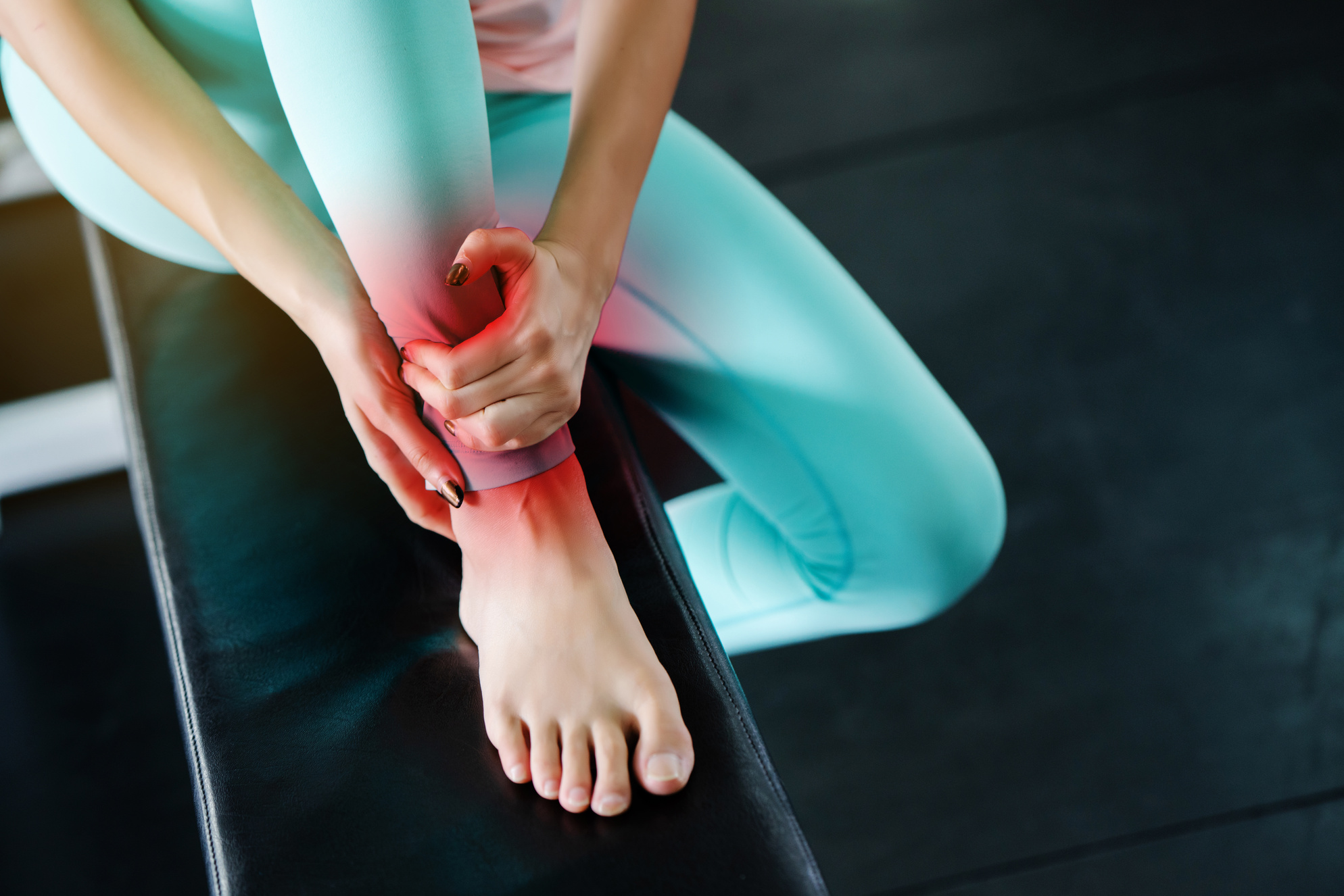
Women who are athletes abusive exercise. And no body warming. Cause accident on the right ankle inflammation. And can not stand. Need to find a specialist in emergency treatment. concept health care
Our feet endure an incredible amount of constant wear and tear every day. It’s very easy to ignore minor foot pain, discomfort, or visual changes appearing over time. Nevertheless, this can allow serious underlying medical conditions to go undetected and then worsen progressively. In fact, the health status of our feet can reveal much about total body health. Carefully paying attention to subtle and obvious changes in our feet leads to earlier diagnosis and more effective treatment of developing health issues elsewhere.
Foot Structure Signals Joint Changes
Feet have an extremely complex internal structure containing 33 delicate joints surrounded closely by tendons, intrinsic muscles, and a network of stabilizing ligaments that enable normal motion. Therefore, this intricate foot anatomy actually mirrors the initiation and progression of degenerative diseases that silently affect overall joint health throughout the entire body over time. Obvious external signs of osteoarthritis like chronic inflammation, swelling, stiffness, and painfully limited mobility first becoming apparent in the feet indicates similar erosive joint degeneration is also already occurring in the hips, knees, spine, and even hands.
Bunions, bone spurs, joint swelling, and misaligned toes demonstrate unnecessary increased pressure and seriously improper body mechanics have taken their toll over an extended time frame. Seeking specialized podiatry services to structurally correct bunion and hammertoe deformities as well as any degenerating foot joints early on can dramatically improve comfort, mobility, and reduce risk of painful arthritis body wide. According to the good folk over at Beyond Podiatry, what first visibly manifests structurally in the feet in terms of reduced joint integrity will inevitably spread, affecting total body health detrimentally.
Nerve Damage in Feet Increases Fall Risk
Peripheral neuropathy or irreversible nerve damage often begins in the feet, progressively numbing foot skin sensitivity so that you cannot properly feel the ground anymore. This lack of critical sensations leads to unsteady shuffling walks, increased incidents of tripping easily, and ultimately dangerous falls as the body loses balance control.
Ongoing tingling, burning, electric-like pain, or clearly decreased feeling in the feet requires prompt evaluation for underlying neurological disease or diabetes, which often causes nerve damage. With proper diagnosis and awareness, future nerve function loss can be halted through tight medication control of diabetes and related inflammation to preserve stability.
Detecting Changes in Foot Skin
Feet often develop thick painful calluses and chronic cracked heels purely from accumulated trauma and excessive foot pressure. However, poor peripheral circulation also severely thickens foot skin texture while enabling tiny wounds or irritations to slowly evolve into stalled healing ulcers or recurrent infections. Reduced blood supply and oxygenation signals that hazardous clogged arteries and escalated cardiovascular disease risk is already present and requires urgent care.
In addition, smoking chronically constricts the tiny foot blood vessels first, visually warning of significant peripheral vascular disease years before a debilitating heart attack or stroke might occur. Therefore, take note if the feet or ankles exhibit dusky brown discoloration, swollen veins, damaged cracked nails, or always feel much cooler in temperature than normal. All these reflect failing vascular circulation critical for healing, nutrition, and keeping feet healthy to prevent amputation and maintain regular activity.
Conclusion
Catching subtle early signs of impending health conditions when the very first symptoms appear visibly in the feet rather than much later when severe disease has already progressed elsewhere makes timely treatment easier, more effective, and improves prognosis. Simply put, healthy feet truly equals a fully healthy and active future lifestyle. So properly notice and care for your feet early on to proactively protect your overall quality of life for years ahead.





